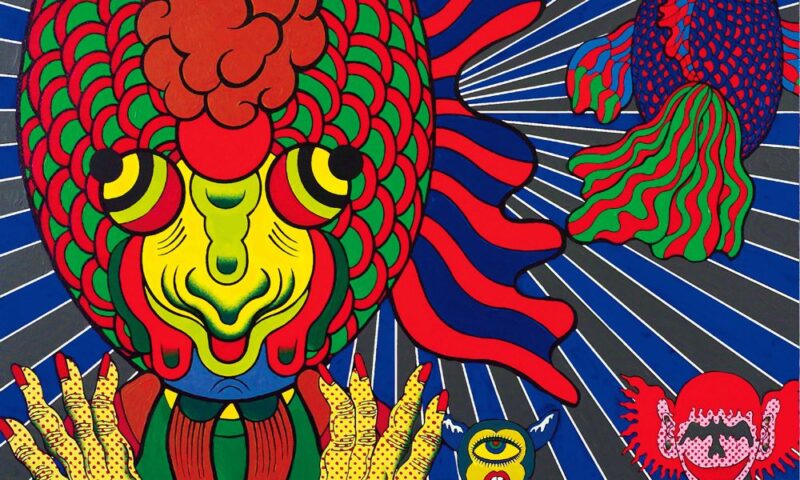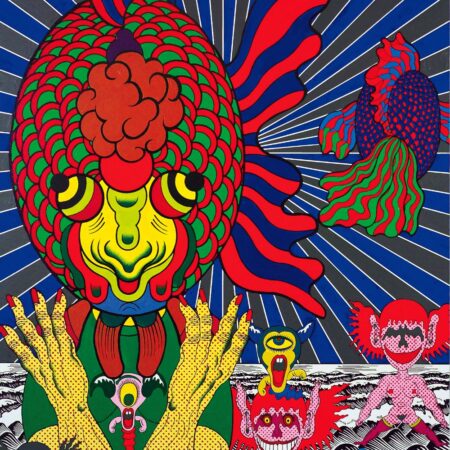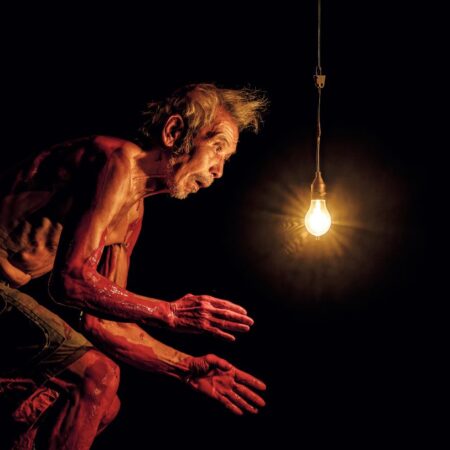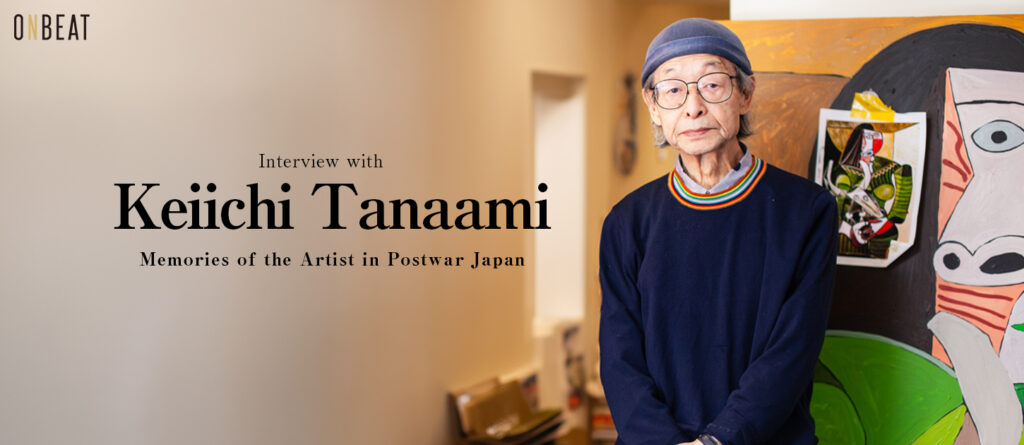
Keiichi Tanaami
Keiichi Tanaami: Adventures in Memory
interview: Hirotaka FUJITA (editor-in-chief) / edit: Akira FUKUMURA
*This article is included in “ONBEAT vol.20” which publish 19th April, 2024
Keiichi Tanaami has been working as a graphic designer, filmmaker, and artist for more than half a century, crossing the boundaries of media and genres. The large-scale retrospective exhibit ion “Keiichi Tanaami: Adventures in Memory” to be held this summer at the National Art Center, Tokyo, will attempt to unravel the full story of Keiichi Tanaami, the last missing piece of the world-class postwar Japanese artist. Ahead of the exhibit ion’s debut, we interviewed Tanaami, an artist who creates a world of strange ideas, and traced the roots of his work.
―We’ve heard that you were born into a clothing wholesaler family in Kyobashi.
Tanaami : Around 1941, the area behind Takashimaya Department Store was a textile wholesale district, and the Tanaami Store where I was born was one of the stores there. Among hundreds of cloth samples piled up in the stock room, my favorite were name labels. Unlike today’s small ones with only a logo, name labels of those days were as large as a postcard and were status symbols for high-end clothing fabrics. They were woven with various colors of threads including gold and silver, depicting fantastical and exotic scenes or people I’ve never seen, like camels and travelers wandering in the desert. Looking at those labels was much more interesting for me than reading picture books, so I always spent time in the stock room. The stock room was like a flood of colors with hundreds of different rolls of labels. Maybe that color sense influences me now.
―Along with the expansion of the store, you moved near Meguro station. I heard that Meguro Gajoen, known for its gorgeous interior, had a great impact on you in your childhood.
Tanaami : It was located very close to my kindergarten and I used to play there until my mother came to pick me up. Although now it has been rebuilt as a concrete building, Gajoen then was a wooden building and was called “Ryugu-jo (the place under the sea) in Showa era.” Each of its rooms was filled with extremely colorful paintings and sculptures, including Nihonga depicting dancing Maikos or banquet scenes, and there was a red arched bridge in the bathroom. Its impact was more intense than the experience with exotic name labels and I was really fascinated by them. Nowadays children would not be allowed to get in, but back in those more carefree days, the man at the recipient desk would offer us some candies saying “Come in and play,” so we could look around in every nook and corner.
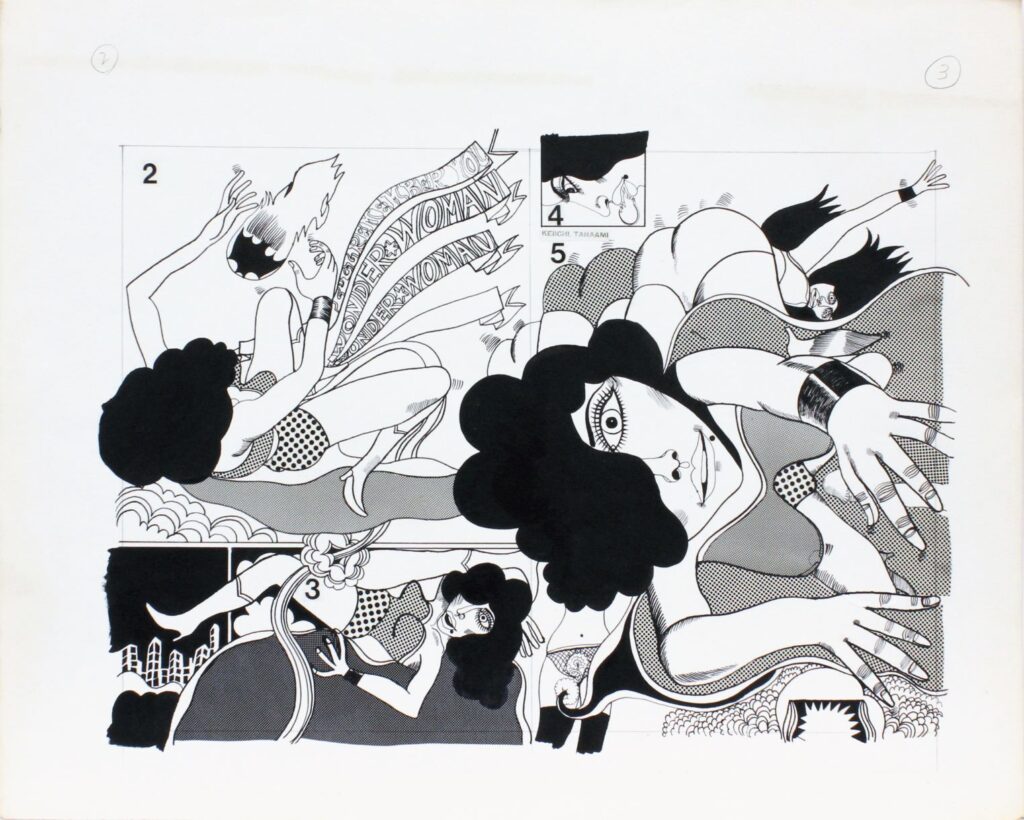
《Wonder Woman》1967 38.5×48.5cm Ink, collage paper on paper ©Keiichi Tanaami Courtesy of NANZUKA
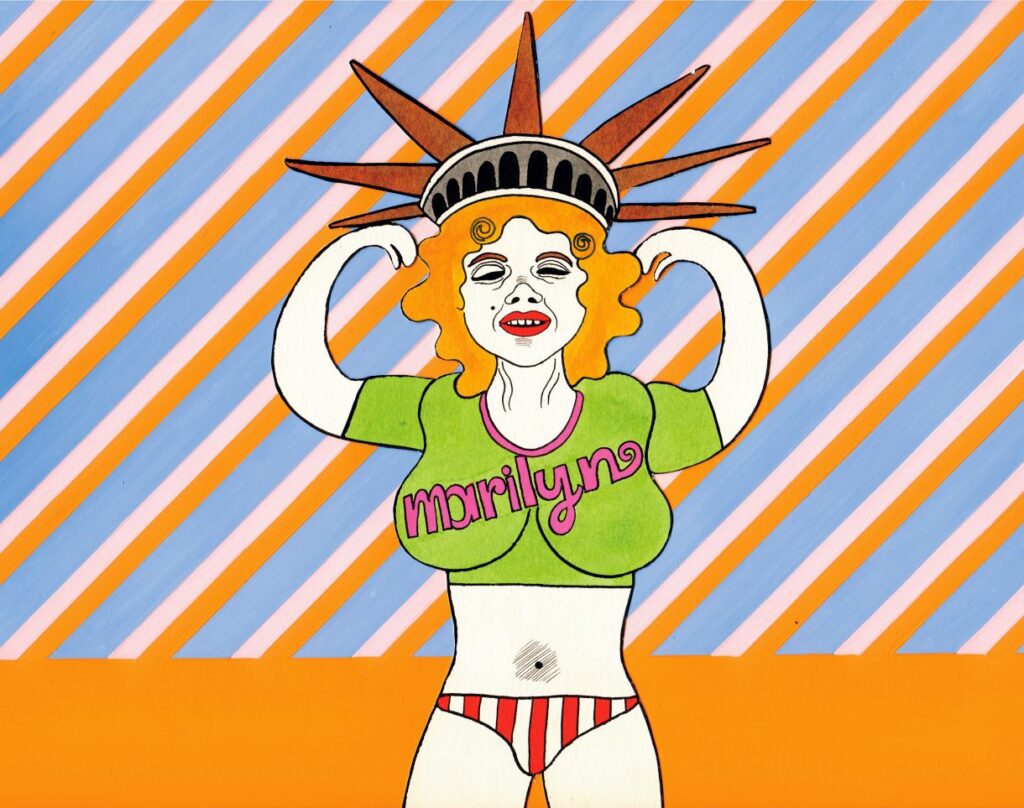
《Good-by Marilyn》1971 Color Animated 16mm Film 4min25sec ©Keiichi Tanaami Courtesy of NANZUKA


